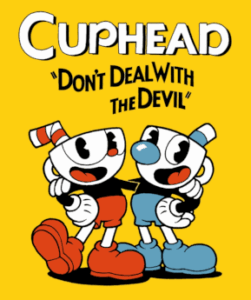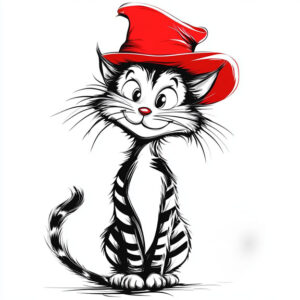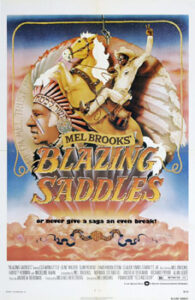 In fiction, race/gender swapping occurs when an established character’s race or gender is changed. For example, the original Nick Fury character in Marvel is a white man but was changed to a black man in the Ultimates and in the Marvel Cinematic Universe. As another example, the original Dr. Smith in the TV show Lost in Space is a man; the Netflix reboot made the character a woman. As would be expected, some people are enraged when a swap occurs. Some are open about their racist or sexist reasons for their anger and are clear that they do not want females and non-white people in certain roles. Some criticize a swap by asking why there was a swap instead of either creating a new character or focusing on a less well-known existing character. For example, a critic of the He-Man reboot might be angry that King Grayskull was changed from white to black and raise the critical question “what about Clamp Champ?”
In fiction, race/gender swapping occurs when an established character’s race or gender is changed. For example, the original Nick Fury character in Marvel is a white man but was changed to a black man in the Ultimates and in the Marvel Cinematic Universe. As another example, the original Dr. Smith in the TV show Lost in Space is a man; the Netflix reboot made the character a woman. As would be expected, some people are enraged when a swap occurs. Some are open about their racist or sexist reasons for their anger and are clear that they do not want females and non-white people in certain roles. Some criticize a swap by asking why there was a swap instead of either creating a new character or focusing on a less well-known existing character. For example, a critic of the He-Man reboot might be angry that King Grayskull was changed from white to black and raise the critical question “what about Clamp Champ?”
Such questions can be asked in bad faith; the person asking them makes it clear that they are angry that minorities and women are allowed to take traditional white male roles. As such, it is not that they want new women or minority characters or more focus on existing characters, the question is a cover for their racism and sexism. These questions serve well in this role as they are not overtly racist or sexist. In fact, when raised in good faith, these are reasonable aesthetic questions. Unfortunately, these questions are now well-established as dog-whistles that allow people to hide their racism and sexism from “normies” while sending a clear signal to those in the know. That some people use these questions without racist or sexist intent helps maintain their innocuous appearance. Someone using them as racist or sexist tools can claim, in bad faith, that they are just asking reasonable questions. And then go on to rage against how “the woke” are ruining everything by compelling race/gender swaps and forcing diversity. Those who call them out on this can seem crazy to those who do not understand the context. But let us ask these questions in good faith.
The most obvious practical reason why race/gender swapping is used instead of creating a new character or focusing on an established character is money. Creating and branding a new character (and building up a fan base) takes time and resources. And it is a gamble, since there is also no guarantee of success. So, keeping the Nick Fury character while making him black made more practical sense than creating a new character to serve as the head of SHIELD. While less well-known characters can become a great success (for example, the Guardians of the Galaxy), this is risky as there are often reasons why such characters are less well known. But this only explains why a new character was not created or why focus was not shifted, it does not explain why the race/gender swap occurred. Fortunately, this is easy to explain and even justify.
While some critics claim that the liberals, feminists and the woke are forcing companies to gender/race swap, these companies seem to be doing this for the same reason they do almost anything: money. Their marketing and research folks are aware that demographics and perceptions change. So, whereas fiction dominated by white male characters was the moneymaker in the past, more diverse characters appeal to some audiences now. If these changes were purely political and hated by most people, these swaps would be consistent and constant failures. This is not to make the absurd claim that they all succeed, just that they do not seem unusually prone to financial failure. Those who say “go woke, go broke” tend to cherry pick their example of failures and ignore the abundance of unsuccessful media that is “traditional” rather than “woke.”
No nefarious conspiracies are needed to explain swaps; this is just businesses trying to maximize profits by minimizing cost and exploiting established brands. Demographics and values change and this explains both the swaps and the rage at the swaps.
It is also worth noting that despite the hyperbole about Hollywood not having new ideas, new characters do get created often. Netflix, for example, floods its service with new shows with new characters which often include females and non-white people. And attempts are made to focus on characters that have been overlooked. These efforts often make the people who ask, “why not create a new character?” angry as it exposes that they ask this question in bad faith. Aside from money, are there good reasons to race/gender swap rather than create a new character or focus on an existing character?
One excellent aesthetic reason is that doing so can make for an interesting plot that explicitly explores the influence of race and gender on the character and story. For example, one episode of Marvel’s What If..? Explores what would have happened if Peggy Carter had become a super soldier rather than Steve Rogers. This swap has a meaningful impact on the story in part because of the assumed gender roles of that time (and now). I think this is one of the best aesthetic justifications for such swaps. Obviously, some people get very angry about such explorations.
Another good aesthetic reason, especially in a reboot, is to use the gender/race swap to create new story and character dynamics. While the focus is not on exploring race/gender issues, these do become new elements for an old character in telling a new story. This also tends to make some people very mad.
There are also various moral reasons to make such changes. One reason is to provide people with characters they can more easily identify with. While critics will claim that people should be able to identify with any hero, ironically this would favor allowing such swaps. After all, if people can identify with any hero, then it should not matter if they were race/gender swapped. Another moral reason is to help foster parasocial relationships using the power of established characters. One reason racists and sexists dislike diversity in fiction is that people can form parasocial relationships and this can make them more tolerant which is something racists and sexists oppose. There are, of course, bad reasons to race/gender swap.
Some might consider the “make money” reason to be a bad one, which is not unreasonable from an aesthetic or moral standpoint. If the swap is purely to make money and it has no aesthetic or moral justification, then criticism would seem warranted. But a swap could make money and be independently warranted on ethical or aesthetic grounds. Also, one would need to be consistent in such criticisms. To use an analogy, the Toyota Corolla of today is radically different from when I was a kid; yet the brand name is kept because doing so is advantageous and helps make money. But people do not get very angry about that.
As noted above, some claim that the swaps are compelled by political actors such as the liberals, SJWs, the woke, and feminists. If a swap were just the result of political compulsion and it lacked all ethical and aesthetic merit, then that swap should be criticized. But a swap could be compelled but also independently warranted on ethical or aesthetic grounds. It is also worth mentioning again that companies are motivated by profit; their political stances are shaped by the bottom line. And even if they were driven by politics or ideology, one would still need to show that their politics and ideology are bad. They usually are, but for different reasons.
While most swaps are motivated by hope of profits, there are good reasons to race/gender swap a character rather than creating a new one. But creating new characters or focusing on less well-known characters are also good options—it all depends on what one is trying to do. Ideally, the swap would be to tell a better story; but there is nothing inherently wrong with swapping for any number of other reasons.


 This contains many spoilers. When I first saw the trailer for The Tomorrow War my thought was “I wonder who that discount Chris Pratt is?” When I realized it was the actual Chris Pratt, my thought was “he must really need money.” Yes, it is exactly that kind of movie. I will start with some non-philosophical complaints and then move on to what is most interesting (and disappointing) about the flick: time travel.
This contains many spoilers. When I first saw the trailer for The Tomorrow War my thought was “I wonder who that discount Chris Pratt is?” When I realized it was the actual Chris Pratt, my thought was “he must really need money.” Yes, it is exactly that kind of movie. I will start with some non-philosophical complaints and then move on to what is most interesting (and disappointing) about the flick: time travel. Some years ago, the right made
Some years ago, the right made  A few years ago, the estate of Dr. Seuss decided to pull six books from publication because the works include
A few years ago, the estate of Dr. Seuss decided to pull six books from publication because the works include  Back when Black Lives Mattered, (HBO) Max briefly pulled ‘Gone with the Wind’ from its video library as an indirect response to protests about racism.
Back when Black Lives Mattered, (HBO) Max briefly pulled ‘Gone with the Wind’ from its video library as an indirect response to protests about racism.  As noted in previous essays, Wizards of the Coast (WotC) created a stir when they posted an article on
As noted in previous essays, Wizards of the Coast (WotC) created a stir when they posted an article on  When the culture war opened a gaming front, I began to see racist posts in gaming groups on Facebook and other social media. Seeing these posts, I wondered whether they are made by gamers who are racists, racists who game or merely trolls (internet, not D&D).
When the culture war opened a gaming front, I began to see racist posts in gaming groups on Facebook and other social media. Seeing these posts, I wondered whether they are made by gamers who are racists, racists who game or merely trolls (internet, not D&D). A few years ago the owners of D&D, Wizards of the Coast,
A few years ago the owners of D&D, Wizards of the Coast,  A few years ago, Wizards of the Coast(WotC), who own Dungeons & Dragons,
A few years ago, Wizards of the Coast(WotC), who own Dungeons & Dragons,